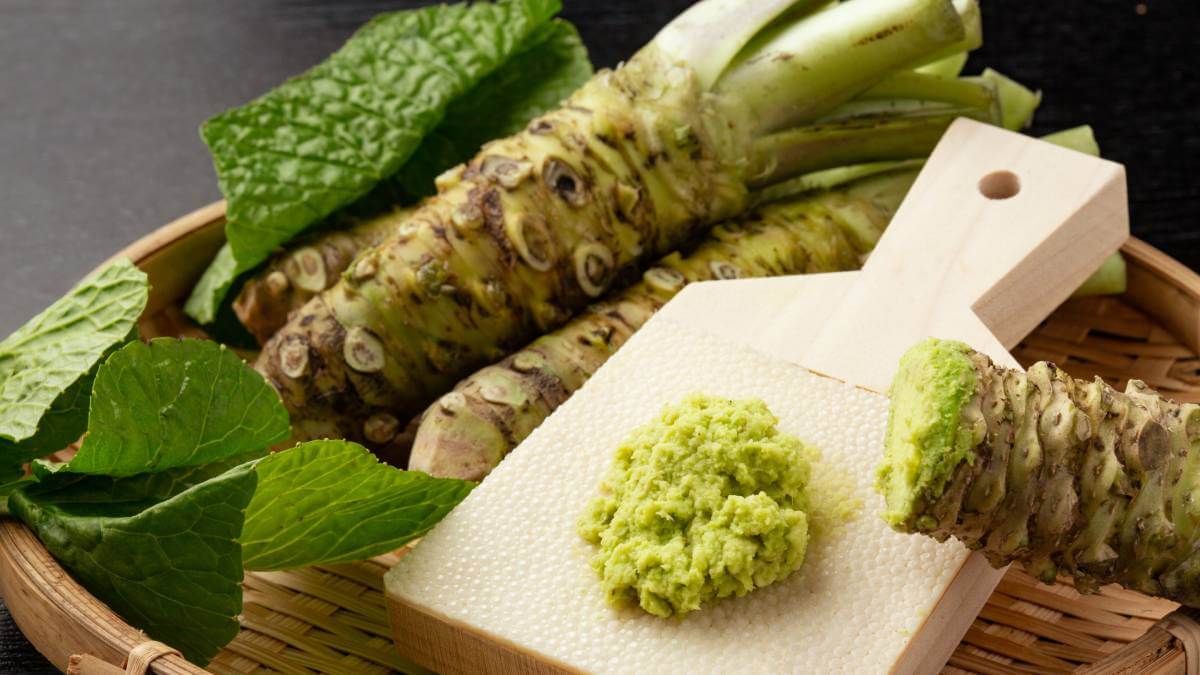If you could eat something that helped control cholesterol, reduced hypertension, helped circulation, tackled respiratory disorders, treated arthritis, reduced your risks of cancer and fought colds, you would probably consume it daily by the bowlful.
Unfortunately, it’s wasabi.
Yes, that hot, green paste you dab on your sushi or sashimi is something of a wonder food.
The paste you buy cheaply is not the authentic wasabi. If fact, it’s not wasabi at all. It’s a product that mimics the taste by combining horseradish, mustard flour and food colouring and it costs a fraction of the real thing.
Genuine wasabi paste is made by grating the stem of the wasabi plant, which is a tricky thing to grow, and because of that, and because of a short shelf life, it’s quite expensive.
Tricky to grow
A kilo of stems might cost up to $400 while the leaves might cost two or three dollars each.
But while it’s tricky to grow, it’s not impossible. If you try, don’t expect to eat any for a couple of years. For advice, maybe ask somebody at Bunnings or your local nursery.
In Australia, the largest grower of wasabi can be found in northern Tasmania, near Devonport, at Shima Wasabi.
Devonport has a latitude similar to southern Japan and a climate ideal for growing wasabi.
Not surprisingly, perhaps, Shima is convinced that wasabi has more to offer than just taste.
“Studies have indicated that wasabi may possess antimicrobial, antibacterial, anti-inflammatory, anti-parasitic and antiviral qualities,” a spokesperson said.
Cancer research
“Wasabi is also considered an important resource in research into cancer prevention and treatment, and other potential health benefits include:
- source of vitamin C
- low in cholesterol
- contributes to heart health
- contributes energy for normal metabolism
- reduces total blood cholesterol
- reduces blood pressure.
A less biased source is Rinkesh Kukreja, editor of Clean and Green Energy and acknowledged as one of the world’s leading eco-conscious bloggers.
He is happy to declare wasabi a superfood.
“Native to Japan, wasabi is indispensable in Japanese cuisine and traditional medicine. During the Jomon period (around 14,000 BC to 400 BC), wasabi was restricted only to the ruling class in the country. Over the years, it made its way out of palaces and castles, and then out of Japan, and became a part of global cuisine.
“Include wasabi into your diet. It will increase nutrient intake and positively affect your overall health.”
WebMD, an American corporation that publishes online news and information about health and wellbeing, is slightly more reserved.
“Wasabi paste (authentic) contains small amounts of iron, magnesium, phosphorous, potassium and sodium. At about one teaspoon, a serving of wasabi is so small that there are few measurable nutrients.
“Authentic wasabi contains more fibre and potassium than the more commonly prepared restaurant version.
“However, since we consume wasabi in such small quantities, there is little nutritional difference between the two versions.”
Get ahead
So, if you’re not convinced about eating bowls of wasabi daily, maybe try rubbing it on your head?
Yes, a major producer of wasabi in Japan claims that applying a freshly grated stem to the hair can promote hair regrowth.
It doesn’t say anything about the ramifications to your sex life.
Do you love wasabi? Have you ever tried to grow it? Share your experience in the comments section below.

